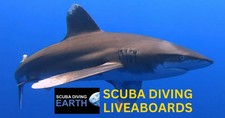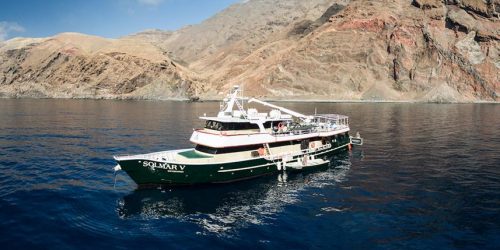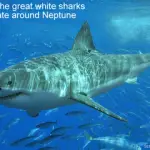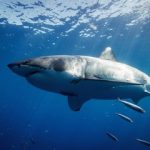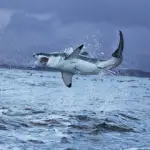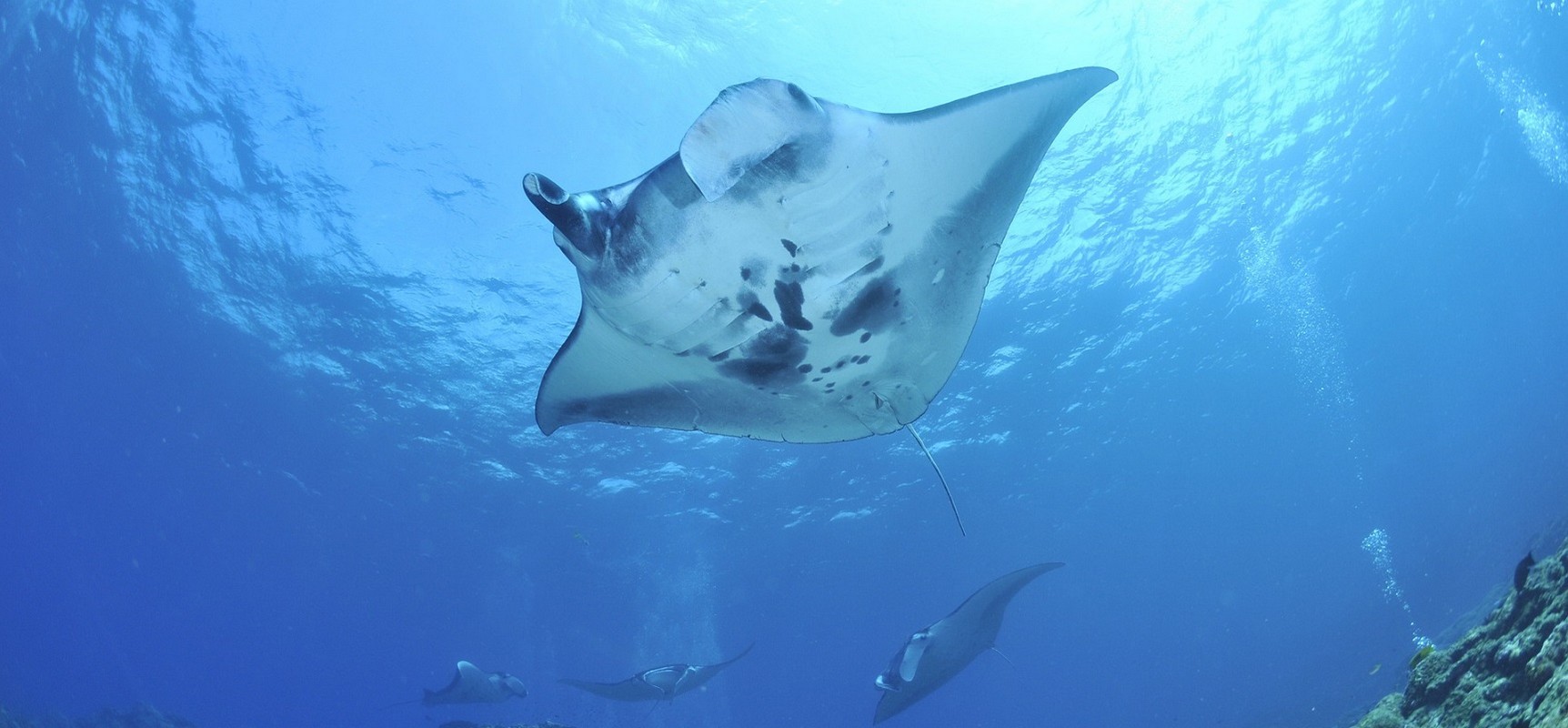
Mexico Liveaboard Diving
Liveaboard Diving With Great White Sharks, Mantas, Hammerheads, Sea Lions And Humpbacks
Popular Mexico Liveaboards
| MV Solmar V; Liveaboard diving in Mexico; 8.7 out of 10 and is rated 'Fabulous'; from £286, $349, €326/day. Customer Review: ”Had an amazing time on the Solmar V. If you you want to see Sharks, Dolphins and Manta Rays Solmar V is the boat to go to. One of the best dives was playing with Manta Rays for a whole hour! We were so impressed we have re-booked for next year!” Recommended for: Boat space, Diving conditions, Great Crew. |
| MV Valentina; Liveaboard diving in Mexico; 9.2 out of 10 and is rated 'Superb'; from £297, $400, €374/day. Customer Review: ”Unique and Unforgettable!! The whole trip was well organised from the initial meeting at San Jose airport to the drop off at the end. Lorenzo (Mexican) is the main guide, and a true gentleman. He is as caring as your own father! Full of enthusiasm for each dive site and seems to have the manta’s and dolphins on speed dial! We also saw schools of hammerheads and my first tiger shark in 18 years of diving. The other guide was a young Japanese lad called, Rui. Again, he was full of life and knew the dive sites very well, and couldn’t wait to get back in the water for the next dive. This is the enthusiasm that you want on a dive trip. I have been on the odd boat where the guides are tired and can’t be bothered to dive. I don’t mind having a small cabin that doesn’t have the latest flat screen TV, or missing out on warm fluffy towels on the dive deck. The guides and the crew make ALL the difference on these trips. Both of these guides help make the trip very special with the wildlife encounters which we all had. The whole crew are a credit and know exactly what they are doing. The food was the best that I have ever had on 20+ liveaboards inc The Odyssey in Truk lagoon. The Valentina was a much better trip. The cabins are quite old, but the boat is clean, hygienic and run so well. Yes there’s quite a bit of sailing to get there, but all the great dive sites around the world entail the same. If they were too easy to get to, they would be over dived and ruined. I can’t wait to book again to try and see the humpback whales on the next trip!” Recommended for: 1) Dolphins, mantas and sharks that are tame and used to seeing divers. These are wild and yet they hang around and play in your bubbles! 2)The guides are fantastic.Really keen, but safe and good fun. 3)All the crew were great – attentive but not over the top. |
| MV Nautilus Belle Amie; Liveaboard diving in Mexico; 9.4 out of 10 and ; from £241, $315, €294/day. Customer Review: ”A truly memorable experience with friendly staff, excellent food and the most amazing diving. We picked this trip as we had never seen an oceanic manta, they did not disappoint. In addition we saw dolphins up close underwater and numerous species of shark not seen before plus, on one dive, several amazing encounters with a whale shark. The organisation by the crew to ensure we had the best experience whilst on the boat was truly exceptional, nothing seemed too much trouble. Although the diving was intense, when out of the water we were able to relax and felt cared for by all the staff. Such a good trip with great memories to look back on, until the next time…” Recommended for: The people, crew and divers. The boat, comfortable and relaxing. The diving, incredible! |
| MV Quino el Guardian; Liveaboard diving in Mexico; 8.8 out of 10 and is rated 'Fabulous'; from £235, $289, €270/day. Customer Review: ”An amazing trip with 20 dives in super Viz and so much to see.. The highlights were closely interacting with the Giant Manta’s, And visiting local areas and dive sights in Baja before the sailing, esp. Cabo Pulmo.” Recommended for: The Pelagics were fabulous …The crew were brilliant…and the food was really great. |
| MV Nautilus Explorer; Liveaboard diving in Mexico; 8.9 out of 10 and is rated 'Fabulous'; from £259, $315, €294/day. Customer Review: ”Trip of a lifetime! Amazing first live aboard experience. The other divers said that this trip would spoil me, and was much nicer than other live aboards. Service was great. Food was awesome (though I wish they would have served more Mexican food). This is a very expensive trip (and does not include alcohol, gratuities, or equipment), so you are getting what you pay for. As to the diving, I went from April 1-9, 2018. Highlights of what I saw: hammerheads, dolphins, small whale shark (about 10 feet), a sailfish, many mantas, and a few other divers saw a tiger shark. Highly recommended!” Recommended for: The staff, diving, and other divers. |
| MV Nautilus Under Sea; Liveaboard diving in Mexico; 8.8 out of 10 and is rated 'Fabulous'; from £241, $315, €294/day. Customer Review: ”Fantastic viewing of Great Whites and a super enjoyable trip. Seeing Lucy a big female turn up for last few hours of trip.” Recommended for: Sharks, food and visibility. |
TO SEE ALL MEXICO LIVEABOARDS SCROLL TO THE TABLE BELOW
Liveaboard Diving in Mexico
Mexico liveaboard diving in the Pacific is about diving with great white sharks at Guadalupe Island, or with giant Pacific manta rays and humpbacks at Socorro island or in the Sea of Cortez, named “the world’s aquarium” by Jacques Cousteau, with schooling hammerheads, sea lions and whales sharks.
Liveaboard diving in Mexico is all about encounters with large pelagic fish. Mexico diving is popular with scuba divers who want to dive with sharks and manta rays, with the possibility to see dolphins and humpback on whales too. Not to mention the largest predatory shark and pelagic fish, the great white shark which can be seen at Guadalupe Island off the west coast of Mexico.
The best dive locations visited by Mexico liveaboards include Guadalupe (best for great white sharks), Sea of Cortez (best for humpback whales, California grey whales, killer whales, manta rays, leatherback sea turtles, and Humboldt squid) and Socorro Islands (best for manta rays, dolphins, sharks and whale sharks).
In short, Mexico liveaboard diving is all about the big stuff, and is really only diveable by diving liveaboard due to the remoteness of the best locations. For example, Guadalupe is about 240 kilometres (150 miles) off the west coast, and the islands of Socorro are 458 kilometres (285 miles) from Cabo San Lucas.
If you want to cruise in Mexico on a liveaboard, most dive trips depart from Cabo San Lucas, San Jose del Cabo located in the south of the Baja California state. But the Mexico dive liveaboards with diving itineraries to Guadalupe depart from from Ensenada, Mexico and San Diego in California.
As most locations are quite a distance from the mainland, and in particular the Socorro Islands, the dive cruises tend to depart at night around 9 pm. But some of the Mexico liveaboards sail in the morning too.
Scuba divers aboard a Mexico dive liveaboard normally dive 3-4 dives per day (subject to weather and sea conditions, and the diving itinerary on the dive boat), other than on the day of departure and the return days.
Check dives are an important part of the dive cruise, which allows the dive guide to know each diver’s ability and helps the captain to decide on the most suitable dive sites for the trip. Mexico dive boats range in length from 25-41 metres (82-135 feet), and will take between 16 to 30 passengers onboard.
The shortest liveaboard itinerary is a 5-night 6-day trip, and you can also book a longer trip of up to 10-night 11-days. The range of Mexico liveaboards include luxury liveaboards to the more budget-friendly cruise, depending on your budget.
Table of Mexico Liveaboards
This list of Mexico liveaboard is in descending customer rating order, so the liveaboards with the highest customer rating will be at the top of the list. To filter this table for the features that are important for your Mexico liveaboard trip, select from the list of filters below.
| Discover Liveaboard | Customer Reviews | Price Per Day | |
|---|---|---|---|
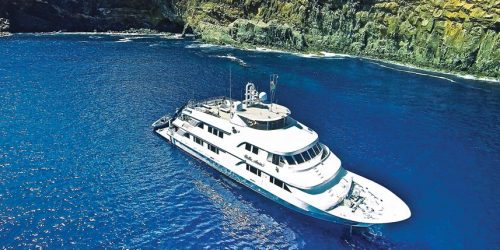 | Review: MV Nautilus Belle Amie; Book: MV Nautilus Belle Amie | 9.4 Exceptional | from £241; $315; €294 |
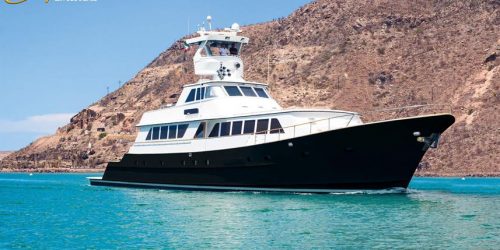 | Review: MV Nautilus Gallant Lady; Book: MV Nautilus Gallant Lady | 9.4 Superb | from £251; $381; €356 |
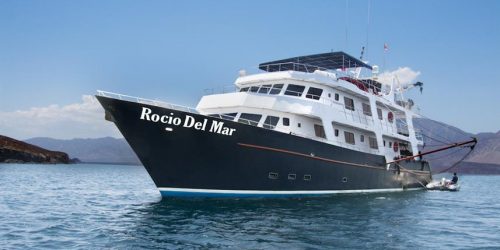 | Review: MV Rocio del Mar; Book: MV Rocio del Mar | 9.3 Superb | from £291; $290; €271 |
 | Review: MV Valentina; Book: MV Valentina | 9.2 Superb | from £297; $400; €374 |
 | Review: MV Nautilus Explorer; Book: MV Nautilus Explorer | 8.9 Fabulous | from £259; $315; €294 |
 | Review: MV Quino el Guardian; Book: MV Quino el Guardian | 8.8 Fabulous | from £235; $289; €270 |
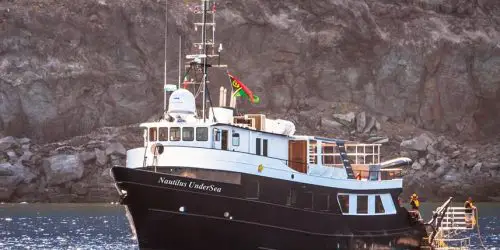 | Review: MV Nautilus Under Sea; Book: MV Nautilus Under Sea | 8.8 Fabulous | from £241; $315; €294 |
- 1
- 2
Note: The above “Price Per Day” was correct at the time of producing this article, as was the exchange rate used to convert the GBP cost to US Dollars and Euros. For an up-to-date cost for your chosen liveaboard, please visit the “Book” link above.
Dive Sites And Areas In Mexico
Socorro Island Diving
Socorro Islands, also known as Revillagigedo Archipelago, is a group of four volcanic islands, which are underwater seamounts far offshore. Scuba diving in Socorro Island is a pelagic lover’s paradise. Be aware of the strong currents around the Socorro Islands, which makes diving in Socorro suitable for advanced divers only.
The Islands of Socorro attract large groups of giant oceanic manta rays, which are possibly the world’s friendliest mantas, as they love to swim close beside divers.
Not only will you enjoy close encounters with manta rays, but you are also likely to see very friendly bottlenose dolphins too (see video below), which are also known to approach and play with divers rather than swim away.
On top of the mantas and dolphins, there is also the chance to see whale sharks too in the winter months (November to May), but November is best month in Socorro to see whale sharks.
When you’re on the liveaboard, there is always the chance to watch huge humpback whales breach the surface. The humpback whales come to the Socorro Islands between November and May to breed and calve, so you may be even lucky enough to see a mother and a calf too.
Socorro is also known for sharks such as whitetip reef sharks, Galapagos sharks, silky sharks, oceanic whitetip sharks and hammerhead sharks too.
The visibility around the Islands of Socorro range from 15-50 metres (49-164 feet), and water temperatures range from 21-28°C (70-82°F). They are part of a protected biosphere reserve and many conservation organisations are working around this region to preserve the unique wildlife which inhabits and pass through.
Guadalupe Diving
Guadalupe is possibly one of the most popular dive sites in the world for cage diving with Great White Sharks. It is where the largest ever great white shark was spotted too “Deep Blue”, who is a 20 foot female great white shark.
If diving with great white sharks on your bucket list, and you want almost certainly to see great whites, Guadalupe is the place to go.
Sea of Cortez Diving
Diving in the Sea of Cortez was described by Jacques Cousteau as “the world’s aquarium“. If you love the idea of diving with fun-loving sea lions (the famous colony of sea lions is off La Paz and is best between September and May), or swimming amongst schools of hammerheads, or perhaps swimming with magnificent whale sharks, then book yourself on a Mexico diving liveaboard to the Sea of Cortez.
The Sea of Cortez offers scuba divers the chance to see incredible marine wildlife in places like La Paz, which is known for large schools of hammerheads. If you want to dive the more remote dive sites, August-November is liveaboard season. It is at this time when the Sea of Cortez is at its warmest 27°C (80°F), which is when you can get up close with whale sharks and hammerheads.
Another dive area of the Sea of Cortez is Cabo Pulmo, which has one of the few coral reefs in this area. The reef is very colourful and has a thriving reef with more than 6,000 marine species.
When to go to Mexico Diving
The best time to dive Mexico is year-round diving. Having said that, the best times to go to Mexico will depend on the marine wildlife you want to see.
The Socorro Islands has the calmest seas from November to May, when the sea temperature is 28°C (82.4°F) in November. Sea temperatures fall to 25°C (77°F) in May, and to as low as 21°C (69.8°F) in February.
The winter months are probably the most exciting time to dive Mexico, as the colder waters bring the main spectacles, which includes breeding humpback whales and hundreds of manta rays. Hammerhead sharks are most seen between September and October.
But if Guadalupe and diving with great white sharks is on your bucket list, then August to October is the best time to go. But the waters around Guadalupe are colder and around 20°C (68°F), so a thicker wetsuit is necessary, or even a drysuit to keep warm.
How To Get To Mexico
There are four ports where Mexico liveaboards depart. These are Cabo San Lucas, San Jose del Cabo, Ensenada and San Diego.
For Cabo San Lucas, San Jose del Cabo you can fly into Los Cabos International Airport, with flights arriving from the United States, Canada, and other Mexican Cities.
If you already live in the USA, departing from San Diego is easy, as you simply need an internal flight to San Diego International airport. But if you are leaving from Ensenada, you can meet the coach in San Diego or Tijuana.
I hope you enjoyed this page about Mexico liveaboard diving
I’d love to hear from you. Tell us about your adventures of diving and snorkeling, in the comments below. Please also share your photos. Either from your underwater cameras or videos from your waterproof Gopro’s!
If this article hasn’t answered all of your questions. If you have more questions either about snorkeling or scuba diving (or specifically about Mexico liveaboard diving), please comment below with your questions.
There will also be many more articles about scuba diving (and snorkeling) for you to read and learn about these fabulous sports.
Have fun and be safe!
Select Another Liveaboard Location
| All Liveaboard Locations |
| Specific Liveaboard Locations |
